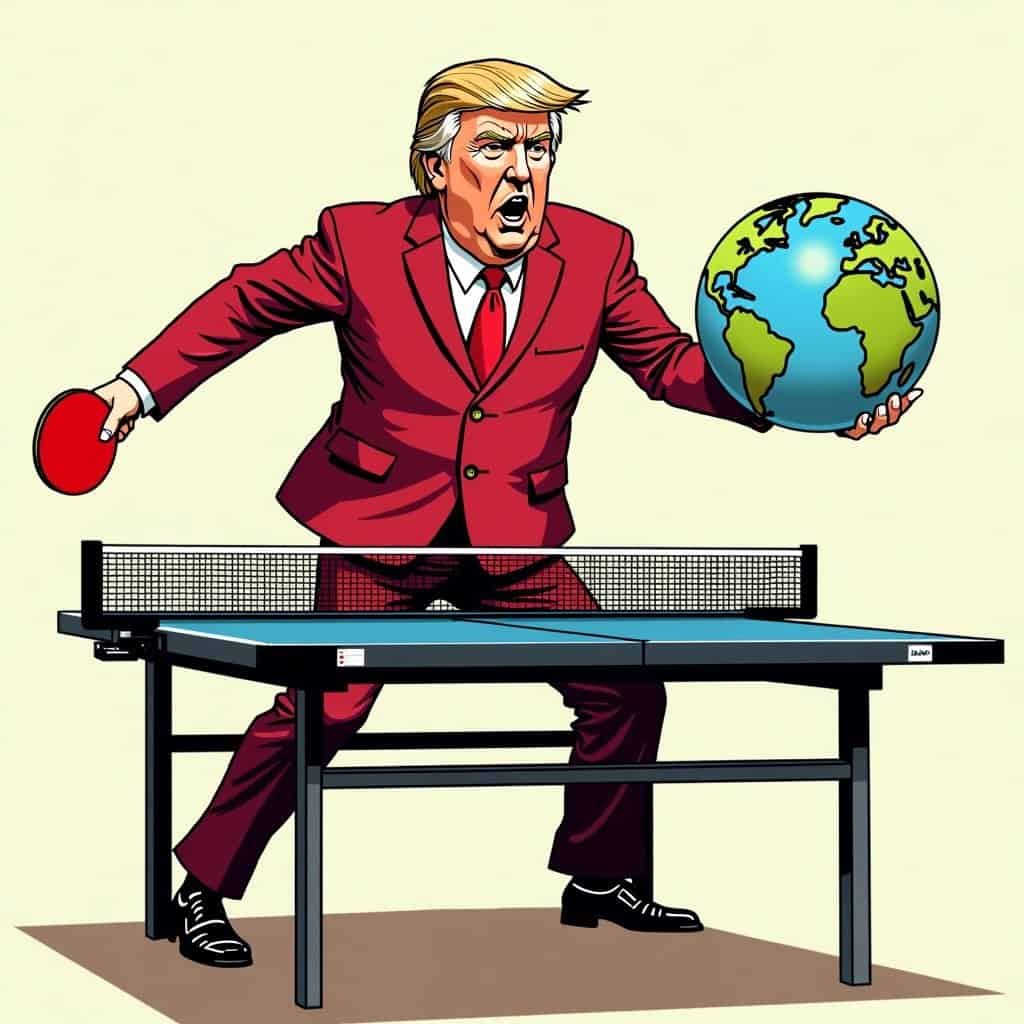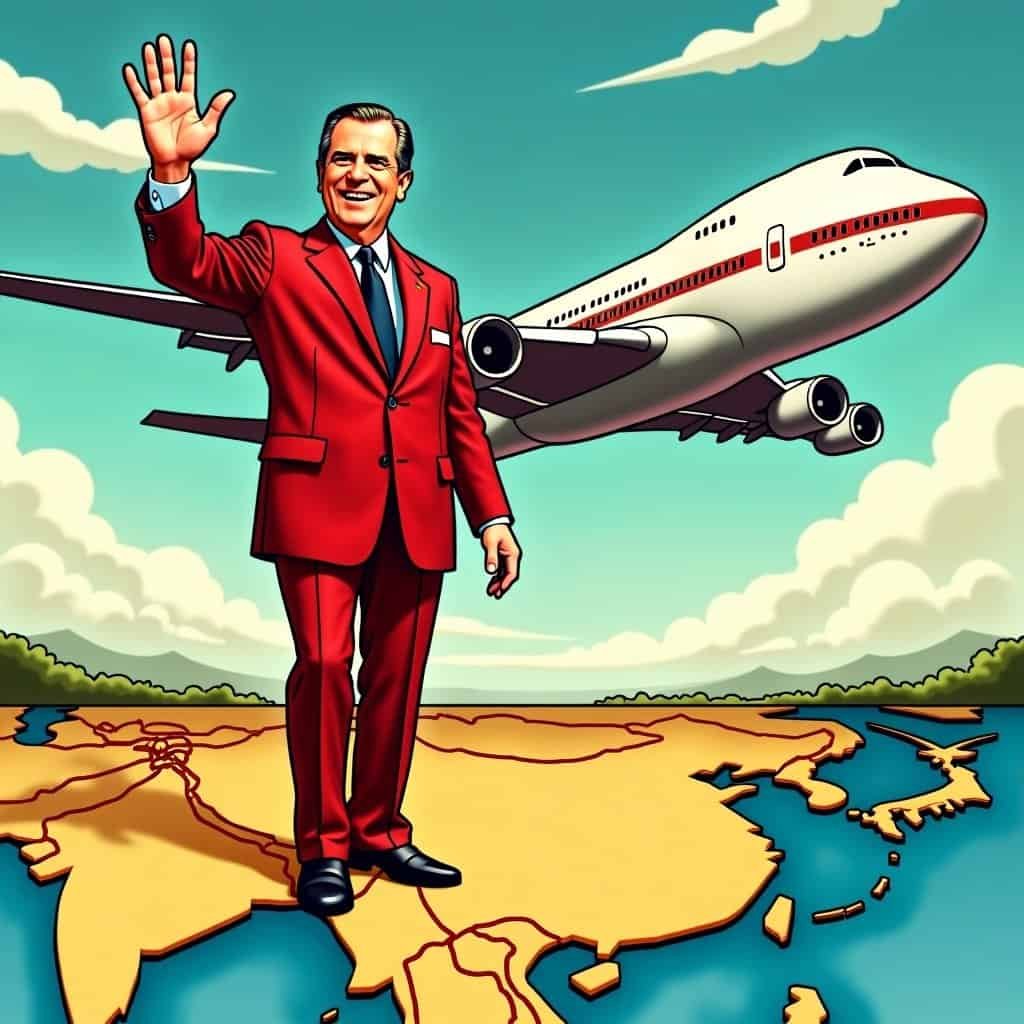Ah, Shuttle Diplomacy—the clever way of handling international relations that goes beyond borders and political obstacles, somehow managing to broker peace along the way. This term dances into the history books alongside Richard Nixon, the 37th President of the United States, whose approach to foreign affairs often resembled a fast-paced ping-pong match. Picture this: two chairs in different countries, countless messages exchanged, and hopefully, a victory for peace.
For those who prefer a straightforward approach, similar to traditional diplomatic methods—no frills, just facts—let’s appreciate Nixon’s creativity in this diplomatic waltz. He was a virtuoso of the kind of negotiations that seemed to involve sprinting back and forth between disagreeing parties, ensuring everyone’s voice was heard (one imagines those ears might need some extra rest after such intense listening sessions).
It’s remarkable what a dose of time-honored principles can achieve when applied to foreign policy. Here’s the gist: traditional values in diplomacy prioritize a strong national defense and a firm, steady hand. This approach aims to secure America’s position on the world stage as a leading player, not a background extra. You know, none of that “hold hands and sing campfire songs” type of diplomacy. It’s almost as if Nixon realized that America couldn’t just sit back and tell the world, “We’ll mind our own business, you mind yours”—because, let’s face it, chaos might follow.
Shuttle Diplomacy in Action: A Visual Timeline
| Year | Event | Outcome |
|---|---|---|
| 1969 | Nixon takes office | Begins implementing Shuttle Diplomacy |
| 1971 | Secret trip to China | Paves way for official visit |
| 1972 | Official visit to China | Improves US-China relations |
| 1973 | Kissinger’s Middle East trips | Helps negotiate ceasefire |
Thus, Shuttle Diplomacy was notable for how it embodied certain traditional values. It was about taking the lead, steering the conversation, and making sure America’s key interests stayed front and center during negotiations. Let’s not forget, true peace doesn’t mean ignoring who has the most influence, either!
While some might go on about the need for teamwork, cooperating for the sake of some grand, unattainable, global utopia, Shuttle Diplomacy showed that sheer persistence and making sure everyone gets a turn at the diplomatic piñata actually works. It brought real results! Imagine if Nixon had just gone with a more idealistic approach—like hosting a seminar on global cooperation. We’d probably still be sitting in uncomfortable chairs with headphones, trying to translate “We want peace!” into every language under the sun.
Pros and Cons of Shuttle Diplomacy: A Balanced View
Pros
- Direct communication
- Flexibility in negotiations
- Builds personal relationships
- Can break deadlocks
Cons
- Time-consuming
- Expensive
- Potential for miscommunication
- Relies heavily on mediator’s skills
But there’s a twist here, because history loves irony like a connoisseur loves fine cheese. Shuttle Diplomacy was a thing of the past, before social and environmental concerns shaped every foreign relations decision. Today’s modern tactics would likely question whether all that back-and-forth travel contributed to carbon emissions. Oh, how times change, don’t they? A nod to history’s recent progressive shift.
But one can’t help but appreciate the concrete results that came from good old-fashioned tough negotiation and persistence. Indeed! With a sense of duty, a dash of practical realism, and a sturdy pair of American-made shoes, Shuttle Diplomacy stands as a smart compromise—a purposeful tug of war that ensures both sides walk away with something, which isn’t quite what some might prefer in today’s world.
So next time someone brings up Shuttle Diplomacy, feel free to tell them about how Richard Nixon led a charge reminiscent of later leaders, all to make sure America didn’t simply sit out another major diplomatic game. It’s the very stuff that traditional values admire—taking initiative, leading from the front, and making sure that Uncle Sam keeps his well-earned seat at the diplomatic table.
Remember, it wasn’t just international relations that took a step forward. It was a wake-up call for time-honored values – responsibility, leadership, and the strength to follow through on promises. Now, how’s that for a real diplomatic victory!






